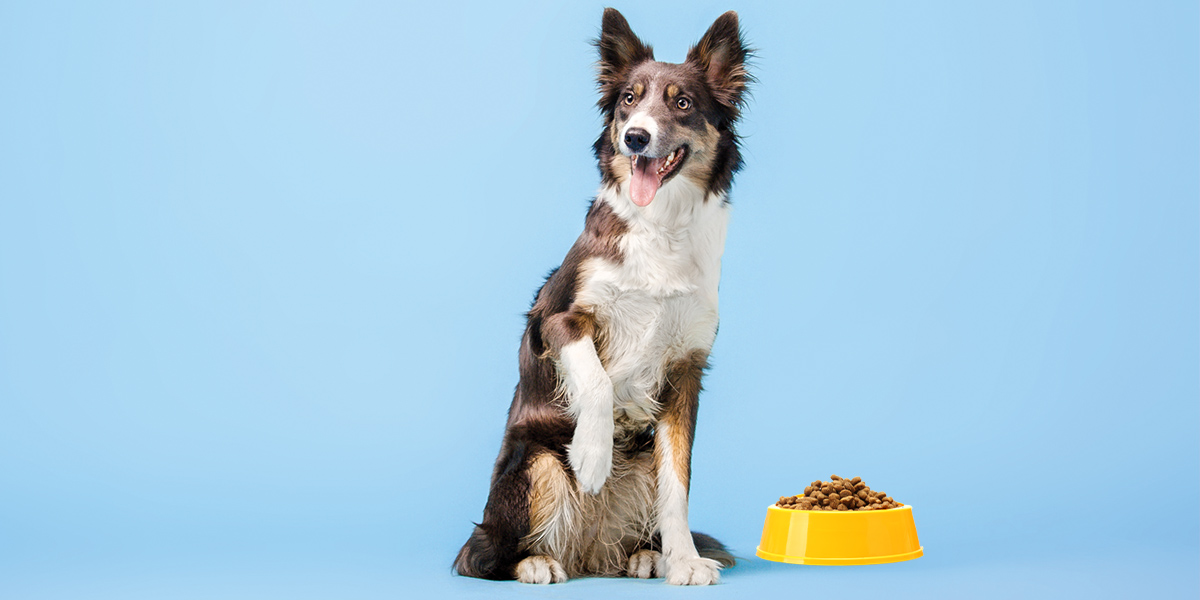Help Isom IGA recover from devasting floods

Determining how much food you should feed your dog isn’t always straightforward.
Bringing a dog home for the first time, getting another dog or changes with your dog’s weight, age or health can all warrant a closer look at how much food you’re feeding at mealtimes.
Although dog food packages usually have feeding recommendations on the label, you may still need to make adjustments to how much and how often to feed your dog based on his specific needs.
What Factors Impact How Much to Feed a Dog?
Several factors can impact not only how much food to feed your dog, but also what type of food he needs.
- Weight: Maintaining an ideal body condition is important for your dog’s overall health. “If your dog is not his ideal body condition, you may need to make adjustments in what and how much you are feeding him,” says Dr. Callie Harris, DVM. Consider a weight management formula to help your dog achieve and maintain his ideal body condition. We also recommend working with your veterinarian to rule out any health concerns.
- Activity Levels: The feeding recommendations on dog food packages are based on average adult dogs with normal activity levels. If your dog gets a lot of daily exercise by going on daily runs or hikes with you, he may need more calories to sustain his energy. “Dogs who are less active and overweight may need a more managed daily caloric intake,” according to Dr. Harris.
- Age: As your dog grows, his nutritional needs change. If your dog is still a puppy, he needs a puppy food for growth and development. Seniors may benefit from senior formulas that help keep older dogs active and their minds sharp. Work with your veterinarian to determine the type of food your dog needs based on his life stage.
Once you find a complete and balanced food that meets your dog’s individual needs, you can determine how much food to feed him. The dog feeding chart on the back of his dog food package can help guide you.
What are Dog Feeding Charts?
>Dog feeding charts are required on dog food packaging. The layout of the chart, however, can vary from brand to brand.
If you’re switching brands, pay close attention to ensure you’re feeding your dog the correct amount based on his age and weight.
According to Dr. Harris, “Dog feeding charts usually make recommendations for daily intake. So, if you’re feeding your dog more than once a day, you’ll need to divide the amount recommended in the chart between those meals.”
Here's a sample dog feeding chart similar to the one you will find on any dry dog food packaging:
Adult Dog Size (lbs) |
Dry Food Feeding Amount (Cups) |
3 to 12 |
1/3 to 1 |
13 to 20 |
1 to 1/3 |
21 to 35 |
1-1/3 to 2 |
26 to 50 |
2 to 2-2/3 |
51 to 75 |
2-2/3 to 3-1/3 |
76 to 100 |
3-1/3 to 4-1/4 |
100+ |
4-1/4 plus 1/4 cup for each 10 lbs of body weight over 100 lbs |
Note: Dog feeding amounts vary from product to product based on calorie content and formula. Consult the feeding chart on the back of your dog’s food packaging. Individual needs can vary, so consult your veterinarian regarding special dietary needs.
How Often Should I Feed My Dog?
Set mealtimes are recommended for most dogs for a variety of reasons. Keeping mealtimes consistent, as well as the type and amount of food you feed him, will help him maintain both his digestive health and his weight. Consistent mealtimes can also help prevent accidents in the house.
For most dogs, feeding twice each day—once in the morning and once in the evening—is appropriate.
Why Does My Dog’s Food Amount Matter?
The right kind of nourishment helps keep your dog healthy. Overfeeding your dog can cause weight gain, which can lead to joint problems and other health issues.
Keeping portion sizes consistent and appropriate based on his age, weight and activity levels will help him maintain his ideal weight and remain active. Find out how your veterinarian assesses your dog’s weight with our Body Condition System.
You May Also Like
These Stories on Pet Club
Jul 24, 2024 3:50:43 PM |
3 min read


